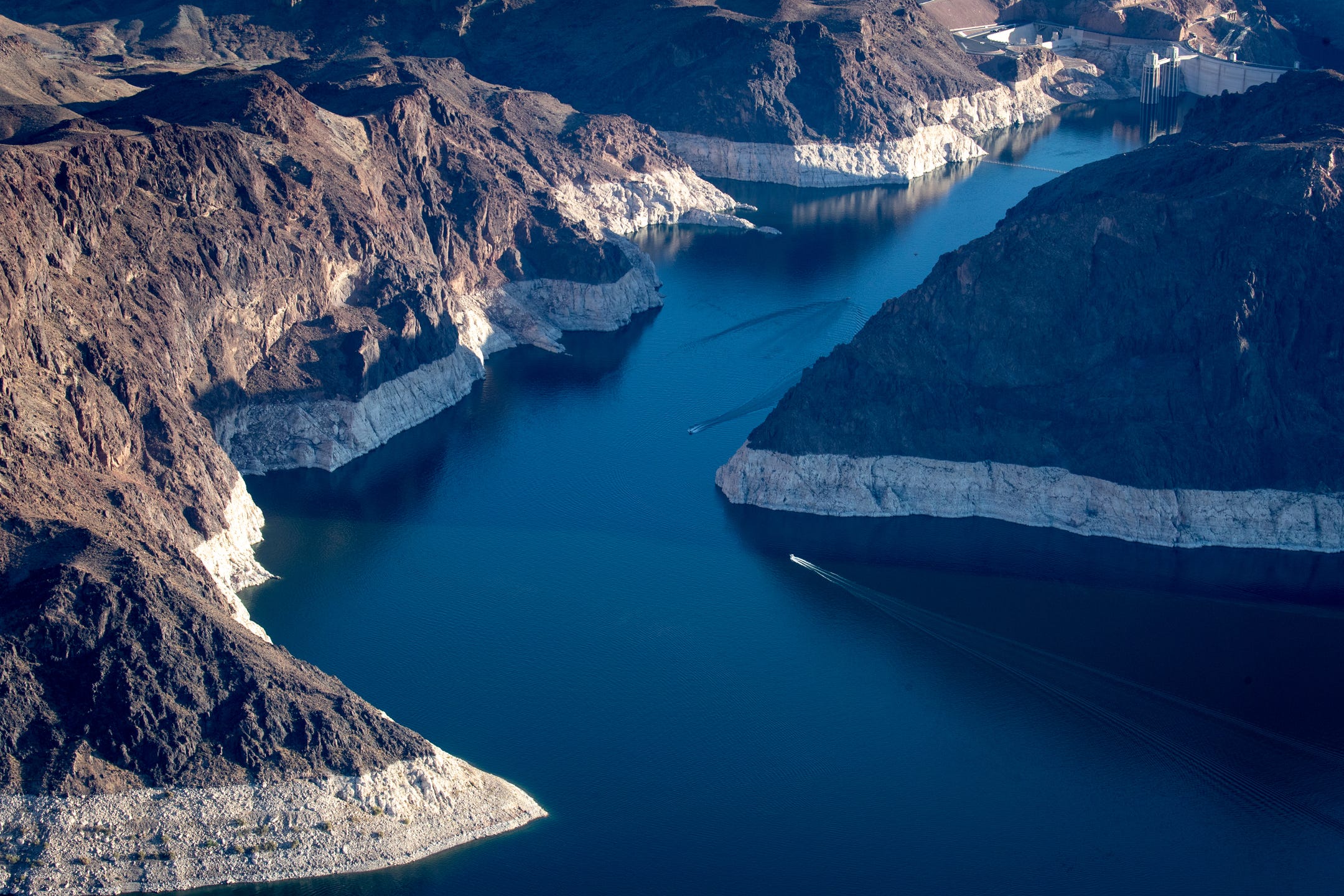
Hoover Dam (top right) and Lake Mead on May 11, 2021. A high-water mark or bathtub ring is visible on the shoreline. As drought squeezes the Colorado River, officials look to newer technology to make the most of the water. Mark Henle/The Republic
The 'yuck' factor once kept cities from recycling water, but better technology and a growing need for water could change attitudes.
Hoover Dam (top right) and Lake Mead on May 11, 2021. A high-water mark or bathtub ring is visible on the shoreline. As drought squeezes the Colorado River, officials look to newer technology to make the most of the water. Mark Henle/The Republic
CARSON, Calif. — The Southwest’s next source of water might be gurgling through the sewage pipes under this corner of Los Angeles County, an untapped stream in a Colorado River Basin that is otherwise tapped out.
Indirectly, Arizonans are poised to reap the benefits of a plan to recycle the last drops from a river that begins as Rocky Mountain snow but ends as treated wastewater dumped into the Pacific Ocean. The reclaimed water would equal what Tucson and Mesa together provide for more than a million people, and the state is banking on securing part of it for future needs.
“We’ve eventually got to get to a place where we can augment the water supplies of this state,” Arizona Water Resources Director Tom Buschatzke told The Arizona Republic when he was advocating for the creation of a $1 billion fund for that purpose.
State lawmakers obliged, and a Carson water-recycling plant could become an early investment from that fund. Water recycling joins desalination, conservation and dam construction as likely ways Arizona will try to wring more water out of its drought-stricken surroundings in coming years.
The Metropolitan Water District of Southern California is testing a unique triple-treatment system next to a Los Angeles County sewage treatment plant near the coast. Ultimately the water utility hopes to build a much larger plant that would enable trading of Colorado River water credits with Arizona and Nevada.
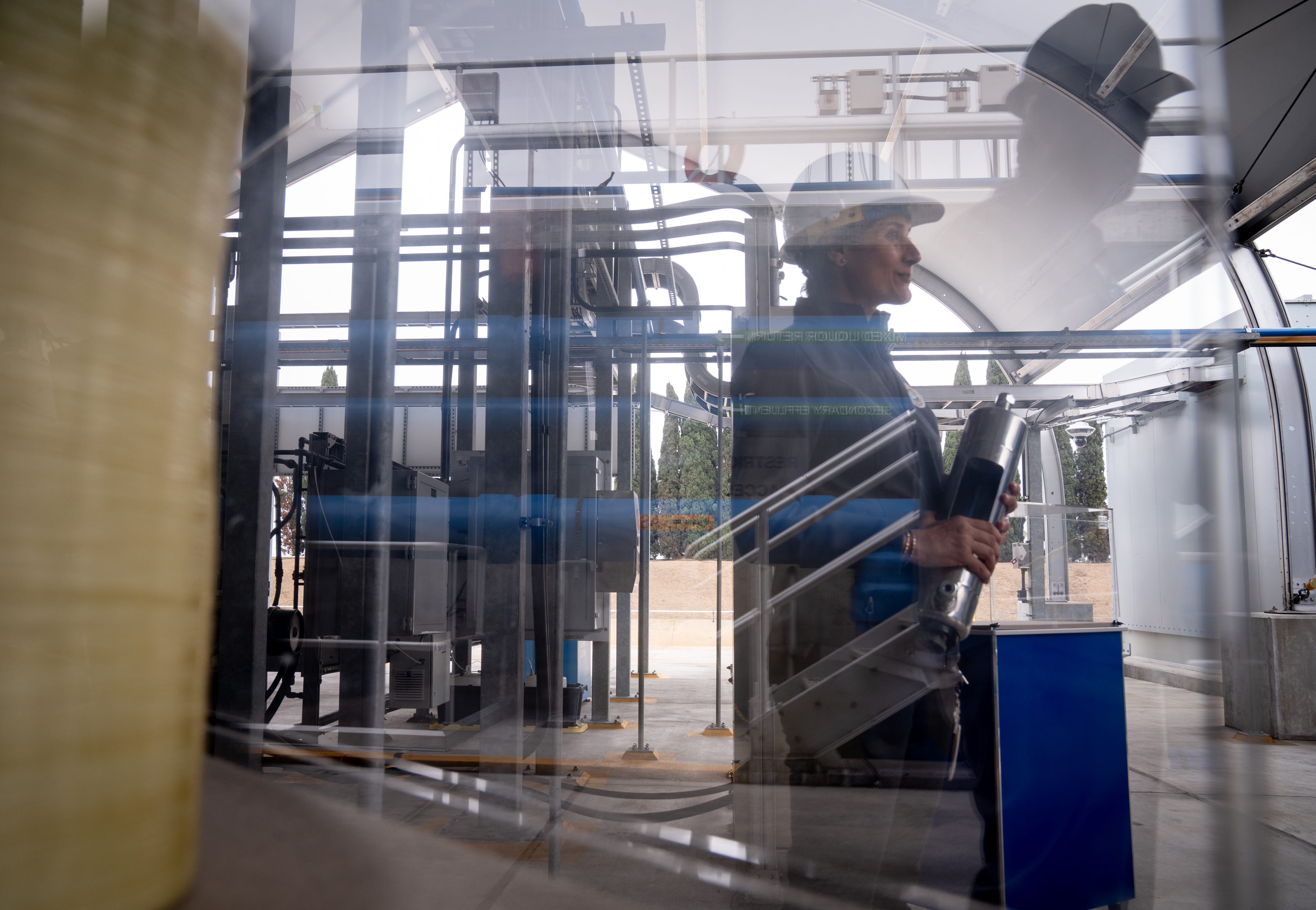
Unlike some existing recycling plants that dump water into the ground for further, natural filtration, this one would put it right back into the supply stream feeding city plants that turn raw canal water into drinking water. Previous efforts at recycling municipal wastewater into fresh drinking water have sometimes stalled out, including one direct reuse plant that Los Angeles built, said Rupam Soni, a community relations manager for Metropolitan.
“Back then there were some important projects that were quashed just because of the 'yuck' factor,” she said.
Now, with Colorado River reservoirs parched from two decades of unrelenting drought, the region has little room to be so choosy. Arizona already reuses water indirectly, on certain golf courses and in cooling the Palo Verde nuclear power plant. But in recent years officials have talked about the coming need for direct recycling of drinking water as well, and about buying into a plant to desalinate seawater in Mexico.
The seven states that draw on the river are under more immediate pressure to use less water now as shortages loom for a second year. Water managers from the states will gather this week in Las Vegas for their annual conference, and federal officials will likely push for new conservation measures, with the threat of forced cutbacks looming.
As a warming climate continues to shrink the Colorado, the water providers are pinning their long-range hopes for a sustainable future on a constellation of smaller replacement sources. Reuse factors heavily, whether for drinking or landscaping and industry.
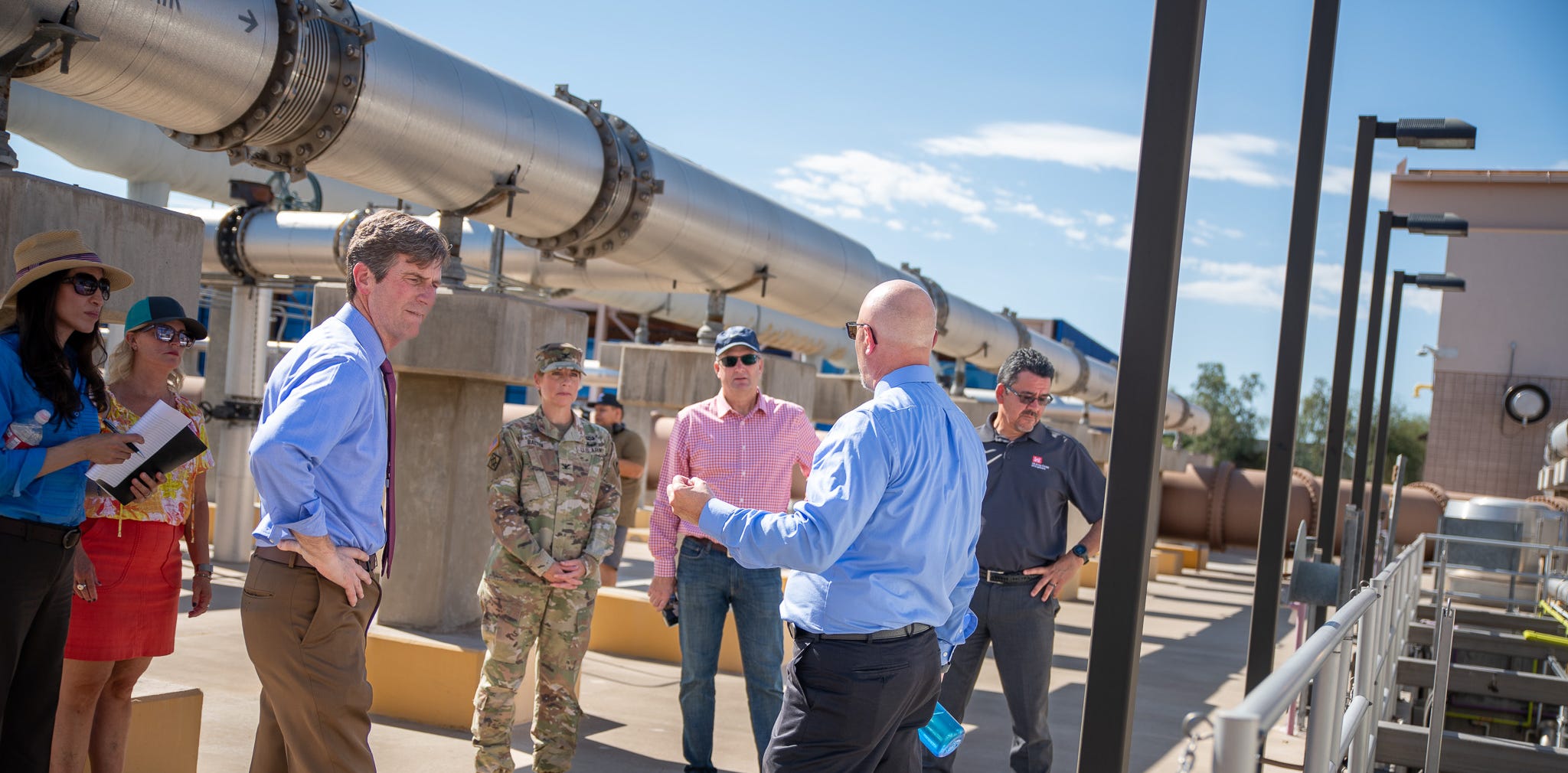
“This is our new reality,” Rep. Greg Stanton said while visiting a dormant water recycling plant in Tempe. Reuse is a must in an era of warming and drying conditions, he said.
Locked in an ultimately successful reelection campaign at that time, Stanton, D-Ariz., was there to boast of his efforts at securing millions of dollars in federal aid to restart the Kyrene Water Reclamation Facility, which Great Recession budget woes had closed 12 years ago.
Tempe’s goals are modest and will cost $60 million. If put back online, the plant will treat up to 40 million gallons a day to standards that would allow its use in landscaping, on golf courses and for cooling a nearby power plant.
Michael Connor, assistant secretary of the Army Corps of Engineers, joined Stanton at the plant, where he said the region needs federal partners and support to solve the deepening Colorado River shortage. Connor served as Reclamation commissioner during the Obama administration, and he said that agency must work to support efficiency and water-saving crop rotations on farms, which use the bulk of the river’s water. Beyond that, he said, the government must support many more small-scale water projects.
Asked if a plant like Tempe’s provided the answer to overcoming the Colorado’s struggles, he said, “A lot these are the answer.”

A Midwest pipeline seems less likely than recycling
Some Arizona officials, like outgoing House Speaker Rusty Bowers, have dreamt of big new, budget-busting water imports like a pipeline from the Missouri River. The U.S. Bureau of Reclamation all but ignored such a scheme when it included a version in a study of the Colorado’s supply-and-demand issues 10 years ago.
Back then, the water-management agency determined, it would cost $8.6 billion to build a 700-mile pipeline from the Missouri to the Denver area, which would presumably then shift away from reliance on the Colorado. That did not count the cost of power for pumping the water — 600,000 acre-feet a year, or enough for well over a million households — uphill across the Great Plains. It also did not account for the thorny interstate politics of water export, or for the Mississippi Basin’s own drought issues, which this year restricted shipping there.
Most of Arizona’s focus so far has been on far smaller schemes that would nonetheless be expensive in their own rights. A full-scale recycling plant in Carson was expected to run $3.4 billion.
Last year, Buschatzke’s department and the Central Arizona Project together committed $6 million toward environmental planning by the Metropolitan Water District of Los Angeles. CAP, the canal operator that is bearing the brunt of Arizona’s drought-imposed reductions of Colorado River water, is paying $5 million of that. The Las Vegas-based Southern Nevada Water Authority likewise chipped in. They’ll all get that money back if the project and a sharing plan don’t develop.
If Metropolitan builds out the currently operating test plant into a full-scale water supplier, the three states could share the expense and the benefits. Southern California would send the treated water to its own taps, while Arizona and Nevada would take a share of California’s Colorado River water stored in Lake Mead.
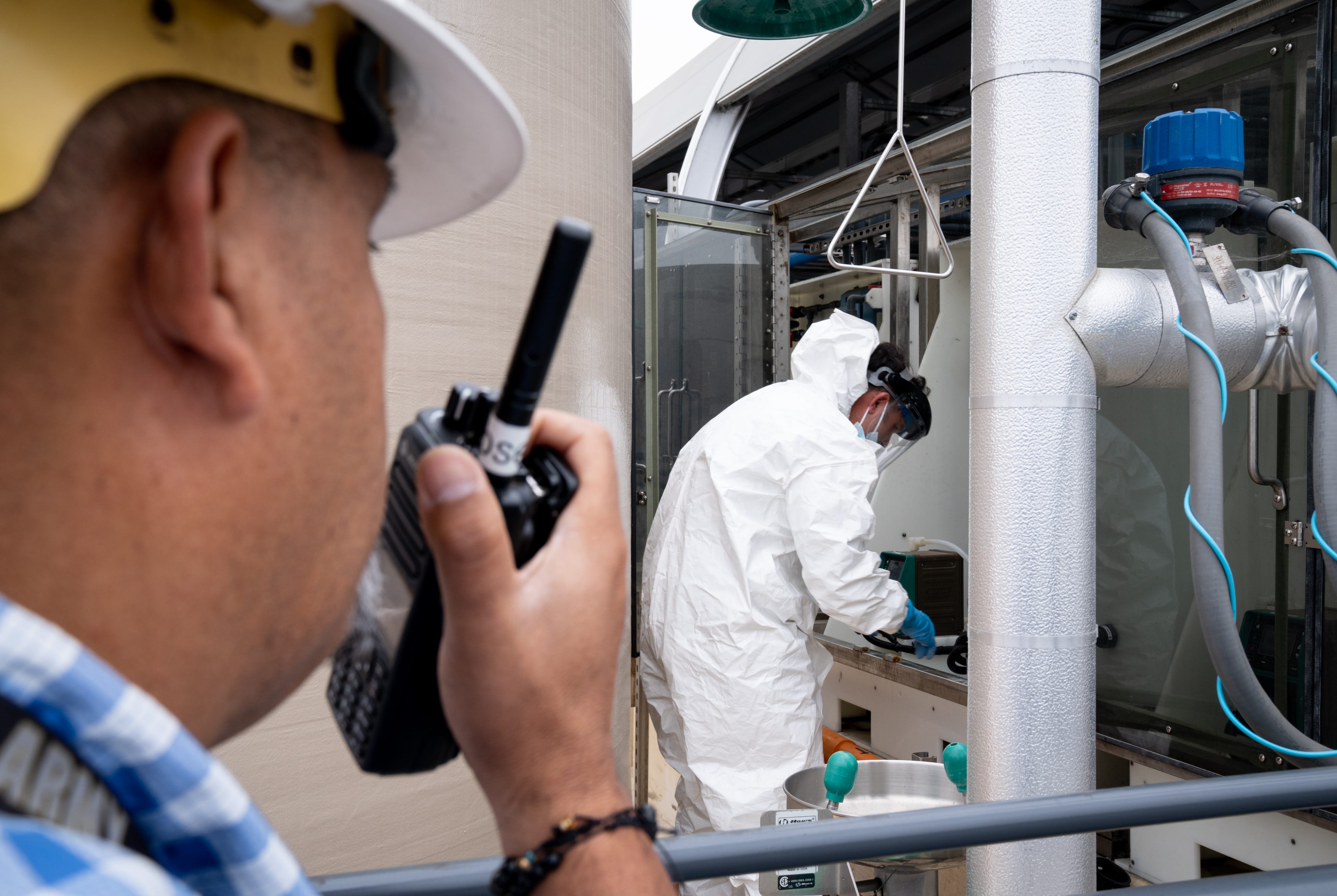
Southern California’s goal is to make the most of its two big water imports, from the Sierra Nevadas and the Colorado, at a time when both geographies are challenged by warming that has altered snow and rain patterns. The region is turning away from the old ways of seeking more to import, said Brad Coffey, Metropolitan’s manager of water resources.
“This is a climate-resilient loop that reduces the impact on a snowpack-dependent water supply,” Coffey said. “It’s to shore up the reliability of those supplies.”
The Carson test plant’s process starts in bioreactors, which are tanks filled with microorganisms to munch on contaminants and remove compounds such as ammonia and nitrate. This is the longest phase of the roughly two-hour purification process. The water that flows out is clean enough for ocean discharge, Soni said, but still contains too much organic material for drinking.
Next up is reverse osmosis, in which the plant forces the water through tightly bunched membranes to remove organics. This process is energy-intensive, but it is powered by bioreactors, which produce biogas that cranks turbines.
Finally, the plant hits the water with ultraviolet rays and adds an oxidant such as hydrogen peroxide.
“This is highly treated water that’s basically almost distilled in quality,” Soni said. “We add minerals back in.”
The test plant produces 500,000 gallons a day. For now, that rejoins the standard treated wastewater for release to the Pacific. If Metropolitan develops a full production plant, it will put up to 150 million gallons a day back into Southern California’s canals.
That would equal about 168,000 acre-feet a year, to use the measuring stick that the U.S. Bureau of Reclamation applies to the Colorado River and its reservoir supplies. It’s less than a third of what Arizona alone must give up from the Colorado in the coming year, due to declining levels in Lake Mead. Even after Arizona’s hit, Reclamation has estimated the states of the Colorado Basin might need to cut 2 million acre-feet or more to stabilize the reservoir. Much of that will have to come from farms, which use up to 80% of the water, but the states are looking for help from every sector.
So while it’s clear that no single treatment plant can reverse the region’s shortage, water managers envision a number of dispersed sources.
Arizona water: Can the 100-year-old rules that divide the Colorado River still work?

With desalination costs high, experts point to conservation
One could be near the river’s delta in Mexico, where Arizona and others have participated in studies to gauge the feasibility of building a plant to remove salt from water in the Gulf of California.
Arizona Gov. Doug Ducey referenced this idea when pitching the $1 billion augmentation fund last January. A 2020 binational report on that possibility estimated that two plants in Sonora, built for a total of $3 billion to $4 billion, could together produce up to 200,000 acre-feet a year. As with California’s recycling plant, Arizona could invest and get credit for river water — in this case, Mexico’s — instead of pumping the treated water into the state. Mexico would then take the treated water in place of some of its share of the Colorado.
Plants like these are problematic, in part because they use a lot of energy, and in part because they leave behind a super-salty brine that must then be disposed of.
Desalination is too expensive, too energy-intensive, and too environmentally tricky to qualify as the next big thing in Arizona water, said Robert Glennon, a University of Arizona law professor and water policy scholar.
“First has to come conservation,” he said. Glennon would like to see Phoenix and its suburbs offer the sorts of lawn-removal incentives and overwatering penalties that Las Vegas employs.
The Southwest already has demonstrated how significantly household conservation can affect usage. Phoenix, for instance, uses about the same amount it did three decades and 600,000 fewer residents ago.
In California, one restriction on how much a Carson recycling plant might eventually produce is a reduction in available wastewater. The adjacent wastewater plant was built to handle 400 million gallons a day but, after the region’s conservation efforts, now takes in only 260 million. When it passed Ducey's $1 billion water augmentation plan, the Arizona Legislature added $400 million for conservation efforts.
After conservation, Glennon said, reuse is the next most cost-effective water source. And reused water need not be treated to the levels that Metropolitan proposes.
“There’s almost no industry that cannot use reclaimed water,” he said.
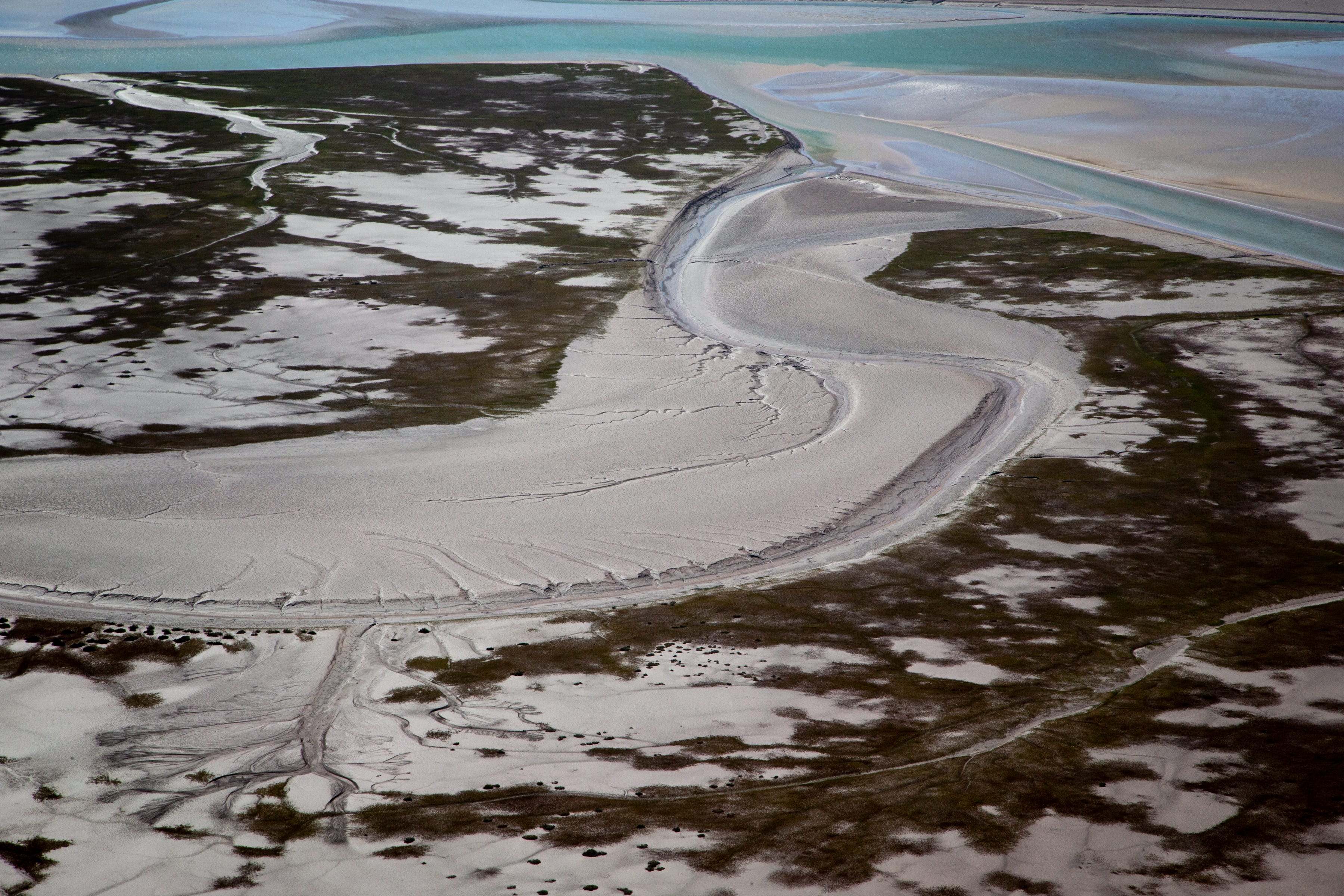
Glennon coauthored an op-ed in The Arizona Republic this month, arguing that those pitching a Mexican desalination plan were underestimating the costs and likely overestimating Mexico’s appetite for a project that merely swaps out its own water source instead of significantly increasing it. If it does go forward, he argued, it could take decades to permit and build.
Buschatzke told The Republic that desalination is a serious consideration for Arizona but remains a decade or so in the future.
Brine disposal is not necessarily a deal-killer in the upper Gulf of California, said Karl Flessa, a University of Arizona geoscientist and Colorado River Delta expert. The area has some of North America’s highest tidal ranges, he said, meaning tidal currents can rapidly mix the brine with more seawater.
Still, he said, desalination plants alone cannot resolve shortages on the Colorado. “It’s not a silver bullet here, guys. It’s only going to be one piece of the puzzle.”
Like Glennon, Flessa believes creating a culture of household conservation will be necessary. It may come by mandate or by utilities’ price increases, he said.

A taller dam could squeeze more water from the Verde
Another billion-dollar water augmentation project is under consideration, this one entirely within Arizona. Salt River Project is hoping to make its Bartlett Dam taller, to hold back more water on the Verde River north of Phoenix while also solving a sedimentation problem that has robbed central Arizona of some 45,000 acre-feet of storage in wet years.
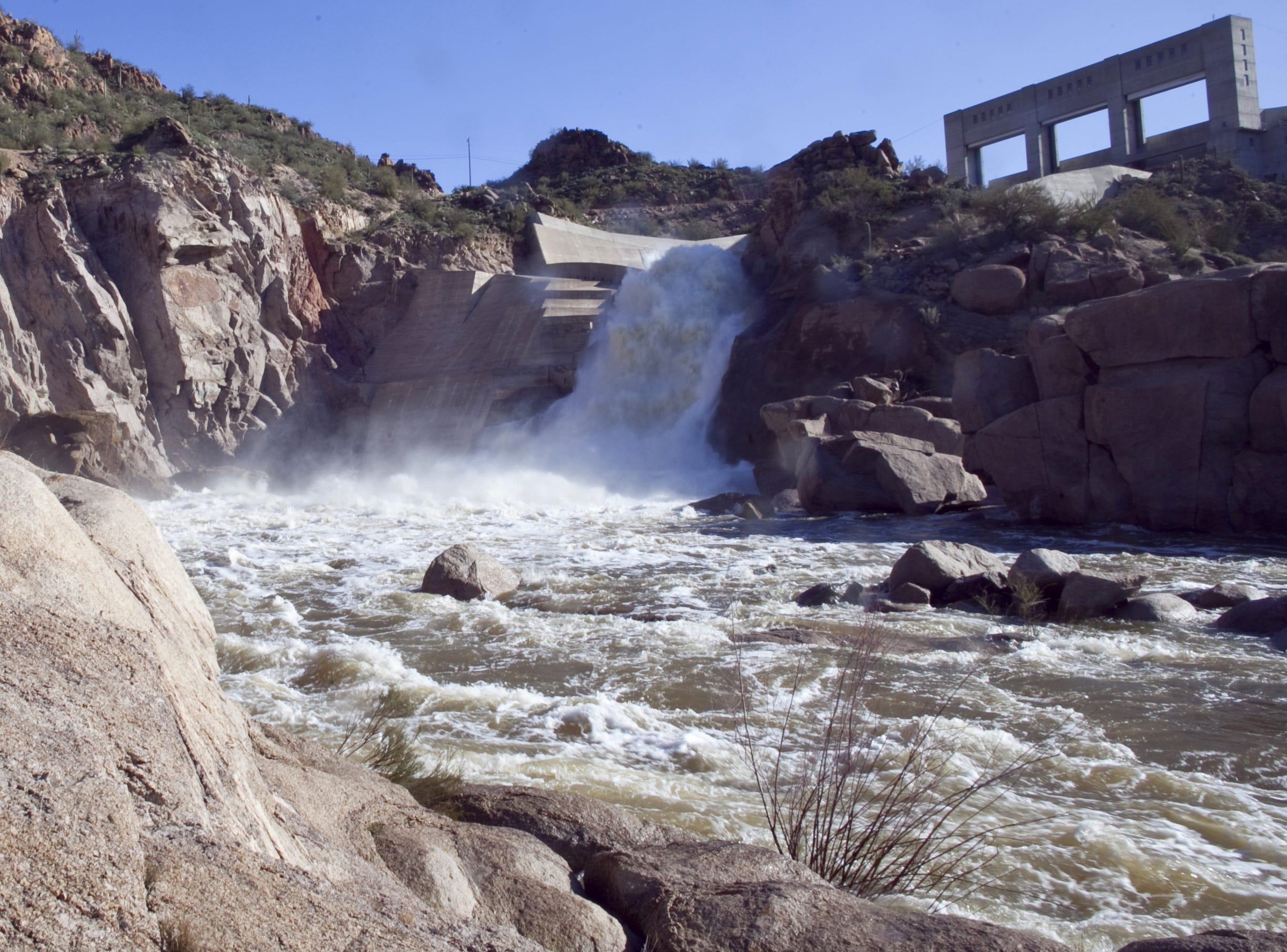
Horseshoe Dam, just upstream from Bartlett, has trapped dirt washed from the high country in flood years ever since a mining company built it during World War II. Phoenix paid to upgrade the earthen dam with spillway gates, adding capacity and allowing the city to use that extra water beyond SRP’s normal service area. Such flexibility is gaining in importance as parts of the city served primarily by Colorado River water need other sources. But that source has declined with sedimentation over the years.
As a result, SRP must open Horseshoe and the downstream dams in flood years and let water run out into the dry Salt River channel through Phoenix before it can be put to use.
Now SRP proposes to raise the 309-foot-high concrete dam at Bartlett Reservoir by up to 97 feet. That would make room for far more water than sedimentation has squeezed out of Horseshoe’s capacity. On average, it would add 115,000 acre-feet to the Verde’s annual water yield, said Ron Klawitter, SRP’s senior principal manager for water system projects. It could be enough to serve an additional 345,000 households in metro Phoenix, according to SRP.
“There’s a very obvious need to make sure we’re looking at all available water sources in central Arizona,” Klawitter said.
SRP’s yield estimate takes into account climate change projections over the coming century. While not immune to warming, the Verde is generally considered less at risk than the Colorado in the Rockies. Early springtime warmth is less likely to sap moisture in Arizona, which has always had an earlier thaw and runoff season.
As with Phoenix’s earlier upgrade to Horseshoe Dam, an addition to Bartlett could provide new water sources for cities outside of SRP’s usual delivery zone if those cities help with its planning and construction. There’s been interest from suburbs like Queen Creek and Buckeye, Klawitter said. The Central Arizona Groundwater Replenishment District is also participating in the study phase. That district, associated with the CAP, has seen its options for refilling aquifers shrink as excess Colorado River water becomes a thing of the past.
“Good water management is good for everybody,” Klawitter said. “We want to be part of the solution.”
SRP also has an incentive to maintain good water supplies to its power customers, he said, and some of them live outside of its water delivery boundaries.
Lake Powell: A 'front-row seat' to a drying Colorado River and an uncertain future
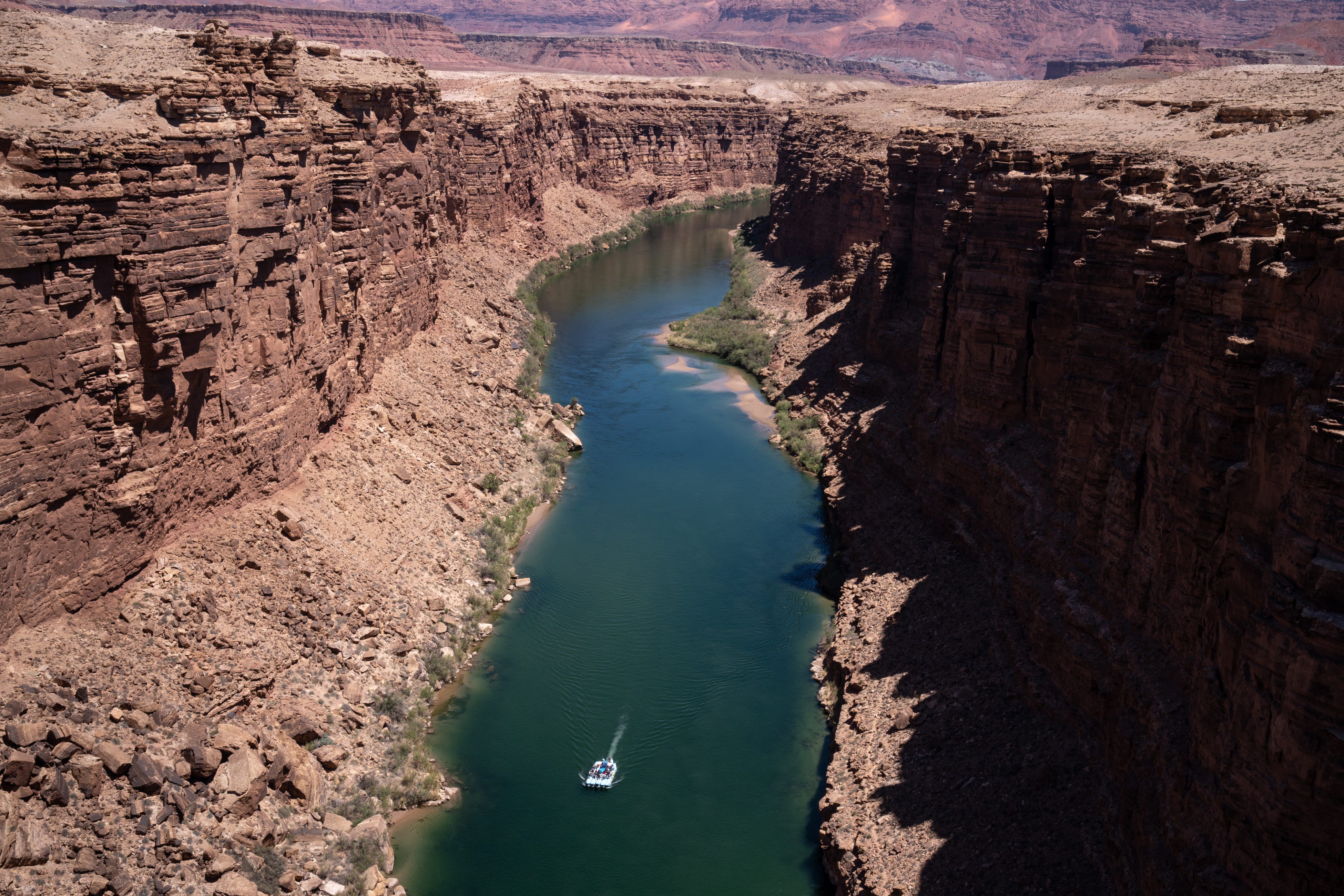

The 'new reality' of scarcity drives discussions
A mural depicting Southern California’s taps into both the Colorado and the Sierra Nevada Mountains graces the entry to Metropolitan’s downtown Los Angeles headquarters. It credits the region with “engineering a marvel” when it built an aqueduct to import the water made available by Hoover Dam, and with “doing it in the middle of the biggest economic collapse that the nation had ever seen,” the Great Depression.
Inside, Coffey said, the agency is shifting to reflect the new reality of scarcity. Now the district is looking to drought-proof the supplies that it already has. Southern California recycled half a percent of its water in the 1980s, he said, but 10% by 2015 and 12% by 2020. The trajectory will steepen with deals like the one Metropolitan is forging with Arizona and Nevada.
“We think that partnering with other entities on the Colorado River is very effective,” Coffey said.
It doesn’t mean California will always be able to share. If a full-scale recycling plant had been operating in Carson this year, for instance, Metropolitan would have needed all it could produce. That’s because the State Water Project, which delivers the region’s in-state supplies, was so dry after a poor snow and rain year.
Such shortages are sporadic in California, having come and gone several times since the Colorado River began its decline around 2000. In years of good local moisture, California won’t need the water that a Carson plant will produce. It’s in those years that Metropolitan can offer to leave some Colorado River water in Lake Mead for its partners.
“Most years we wouldn’t need that full capacity,” Coffey said. Investments from Arizona and Nevada can make the project worthwhile for all three states.
Brandon Loomis covers environmental and climate issues for The Arizona Republic and azcentral.com. Reach him at brandon.loomis@arizonarepublic.com or follow on Twitter @brandonloomis.
Environmental coverage on azcentral.com and in The Arizona Republic is supported by a grant from the Nina Mason Pulliam Charitable Trust. Follow The Republic environmental reporting team at environment.azcentral.com and @azcenvironment on Facebook, Twitter and Instagram.
Support local journalism. Subscribe to azcentral.com today